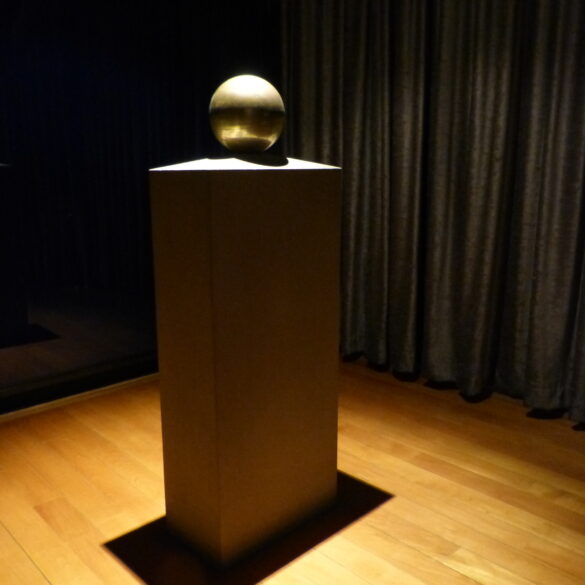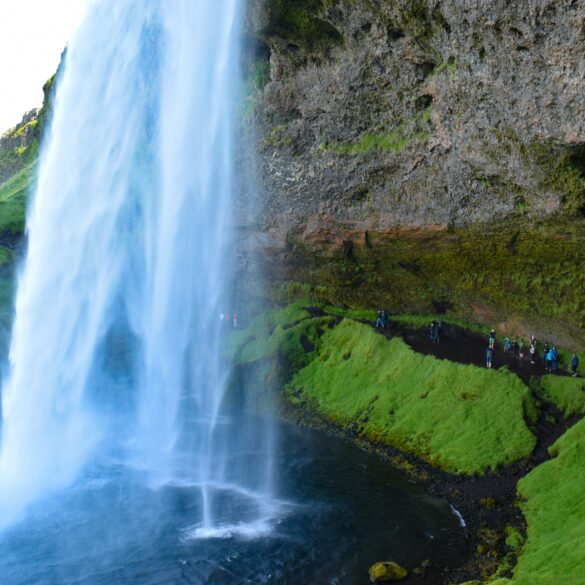The Elfstedentocht.
Ever heard of it?
No, neither had we until we were planning a trip to the Netherlands.
The Elfstedentocht, or Eleven Cities Tour, is an ice-skating race around – you guessed it – eleven cities.
It takes place in the Friesland province of the Netherlands whenever it’s cold enough for the canals to freeze over and meet certain other conditions.
That hasn’t happened since 1997.
For our trip, we based ourselves in Leeuwarden, which is the starting and ending point of the race.
It is also the capital of the Friesland province.
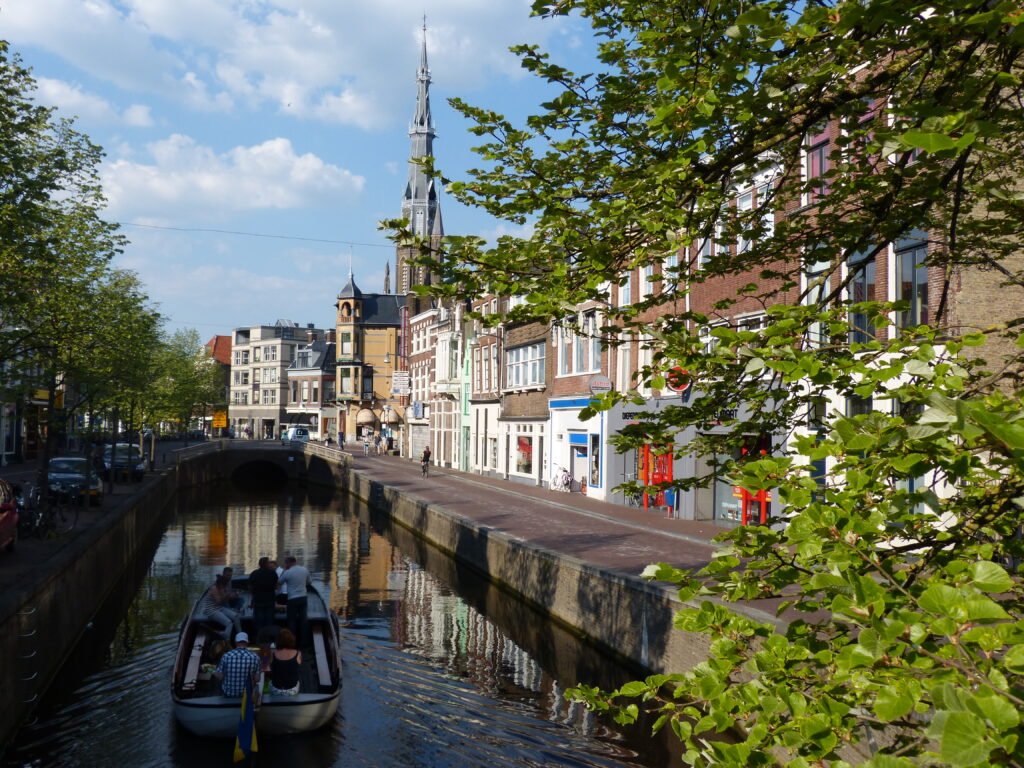
We stayed at the Stenden Hotel, which is part of a college and is staffed by the students there.
They come from all over the world to major in subjects such as hotel management and hospitality, and to a person they were all extremely helpful and friendly.
Leeuwarden is the birthplace of both the artist M.C. Escher and of the convicted spy Mata Hari.
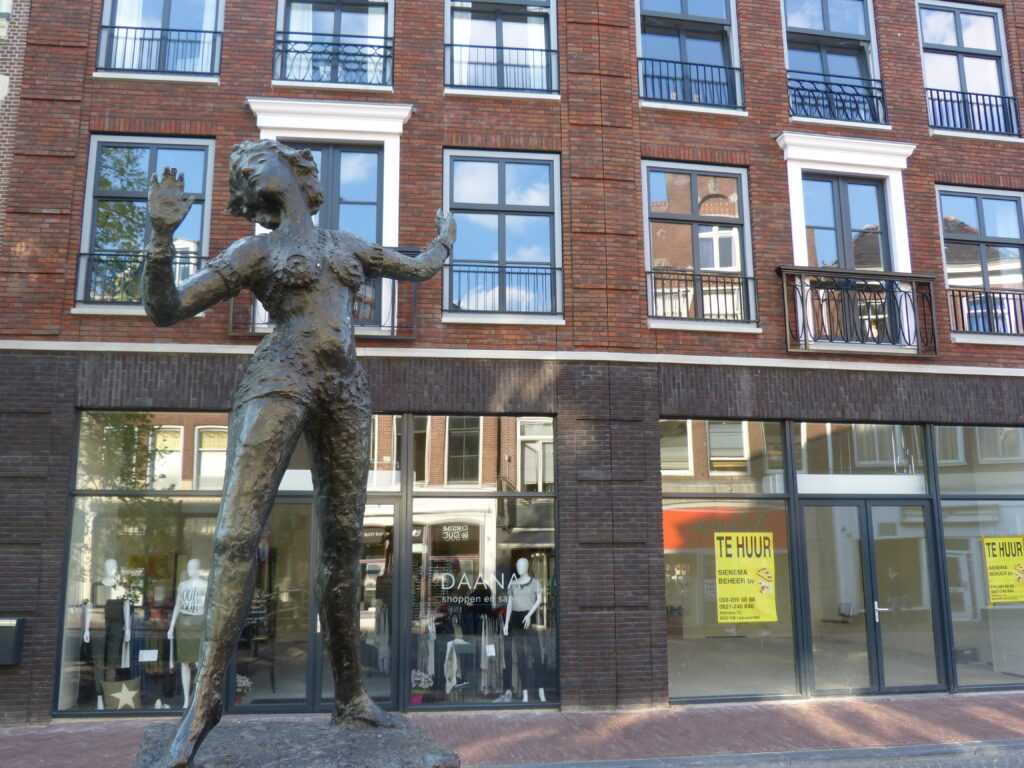
Before her change in career, Mata Hari was an exotic dancer and that’s what the statue of her depicts.
From Leeuwarden, the Eleven Cities Tour follows a circular route in this order (although we did not visit the towns in this order):
Sneek
The symbol of this town is this impressive water gate.
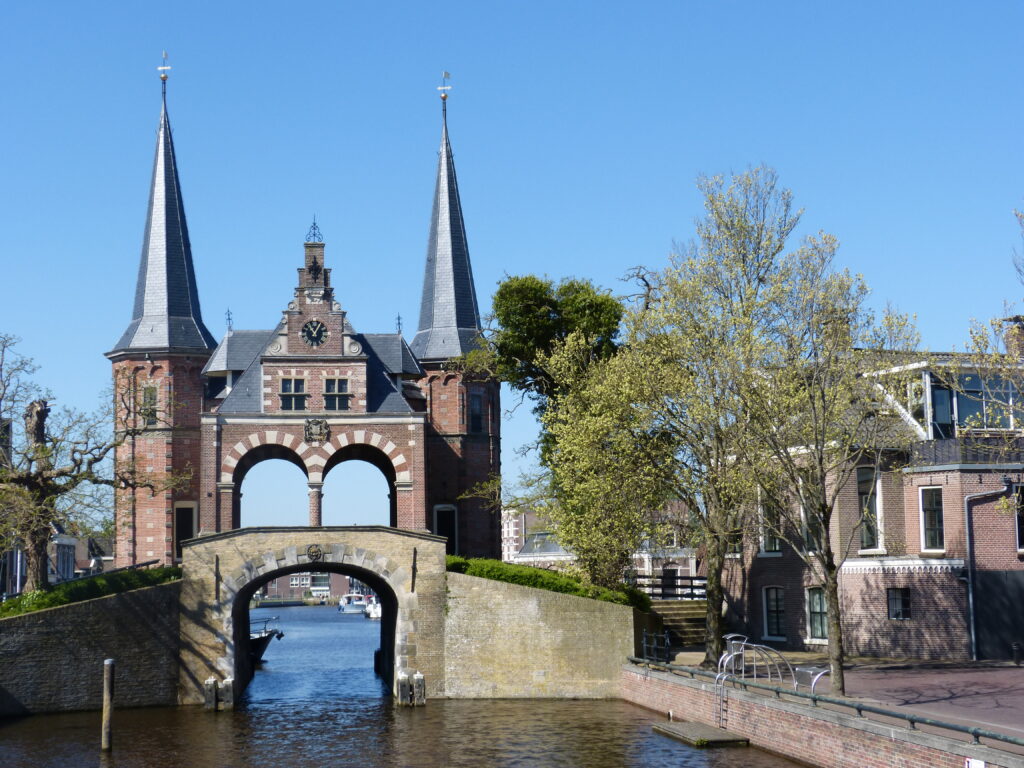
Called the Waterpoort in Dutch, it’s one of the few remaining sections of the wall that was built around Sneek way back in 1492.
We visited the St. Martinus Kerk (St. Martin’s Church) and saw this very odd sign.
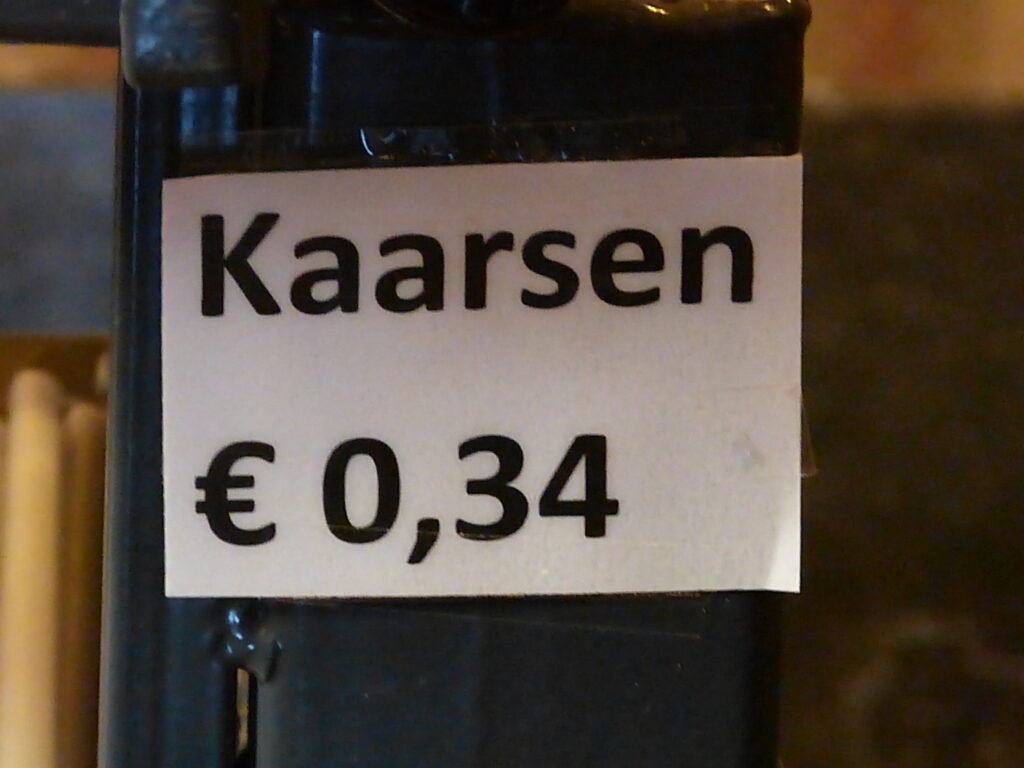
Kaarsen is the Dutch word for candles, so you can see that the cost to light a candle is 34 cents Euro.
Not 30 cents and certainly not 35 cents.
34 cents exactly.
Because of the plethora of marinas and watersport companies in Sneek, it is referred to as the water sports capital of the world.
But Sneek has a much more important claim to fame.
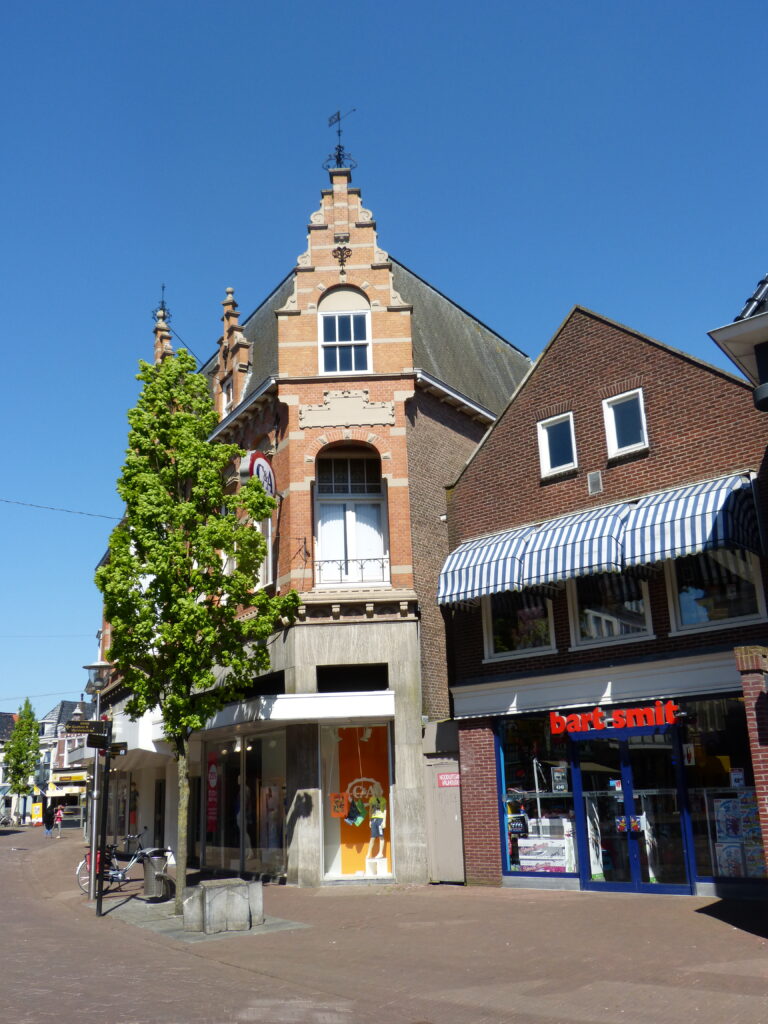
In that building with the tree in front of it, the C&A clothing store chain was started in 1841.
And last but not least, Sneek was occupied during World War II and was liberated by the Canadian Perth Regiment in 1945. Yay Canada!
IJlst
That is not a misspelling.
The name of the town has two capital letters.
It comes from the IJ river, with IJ being an old Dutch word for water.
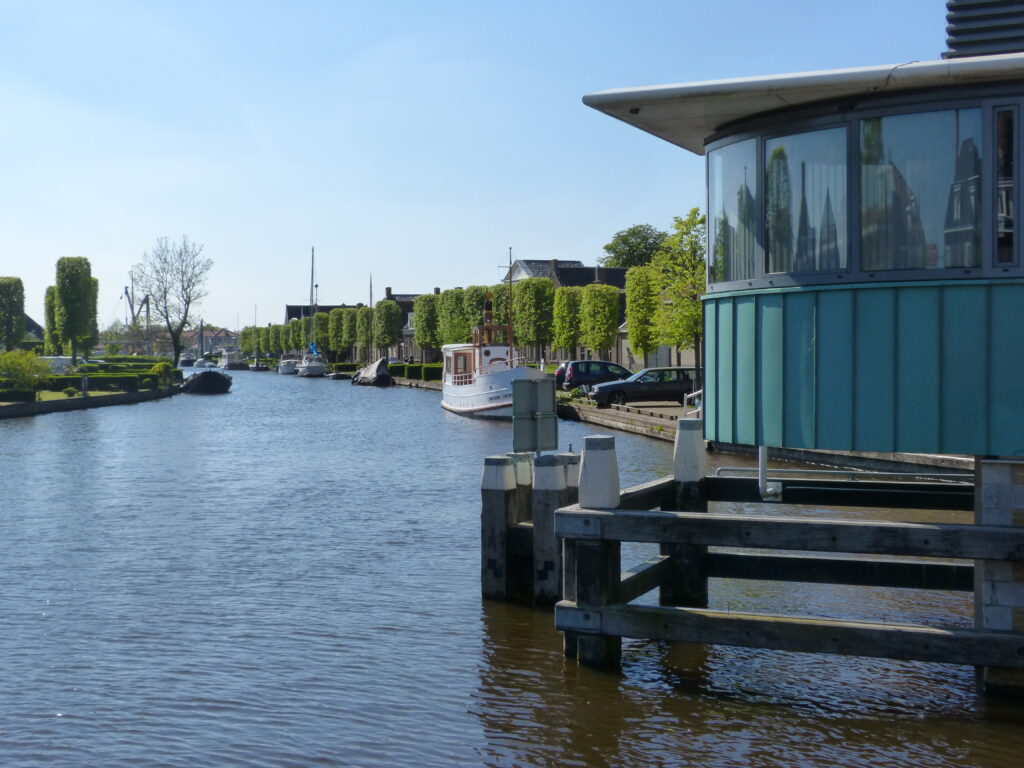
We had an absolutely delicious lunch at the Het Wapen Van IJlst restaurant there and tried a Dutch treat called kibbeling.
Kibbeling is chunks of fish – usually cod – that are breaded and fried.
Ours came with homemade remoulade sauce, fries and a small side salad.
I could have gone back there every day.
Sloten
With a population of fewer than 800 people, this is the smallest of the eleven cities and one of the smallest town in all of the Netherlands.
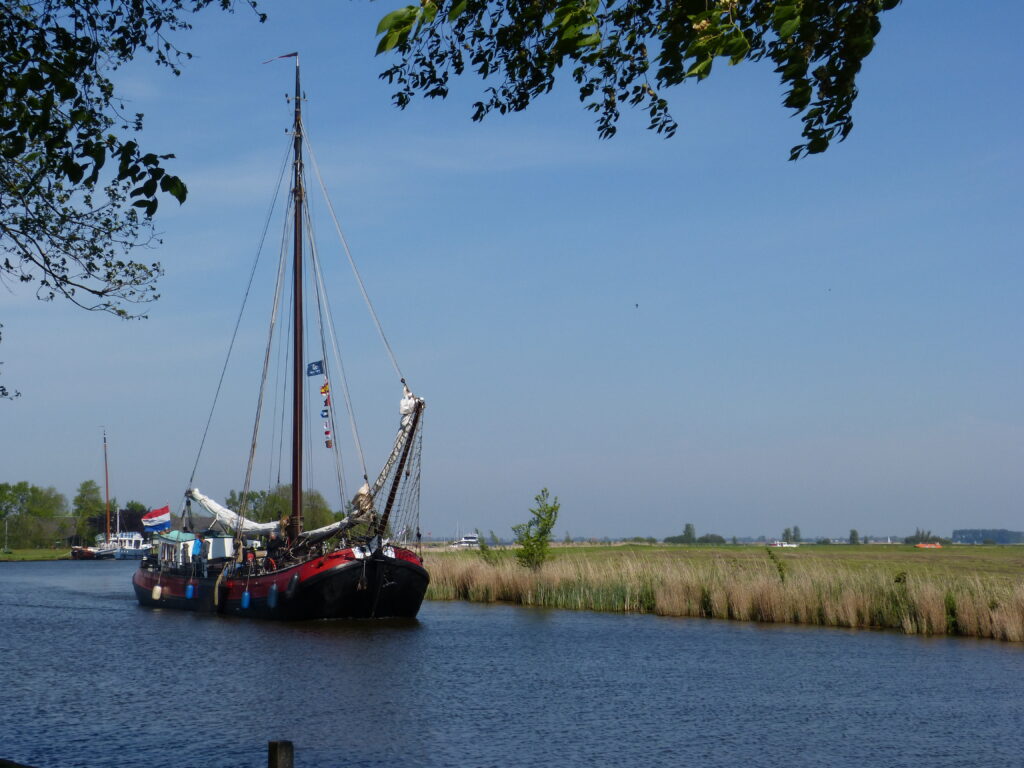
It ended up being one of our favorites.
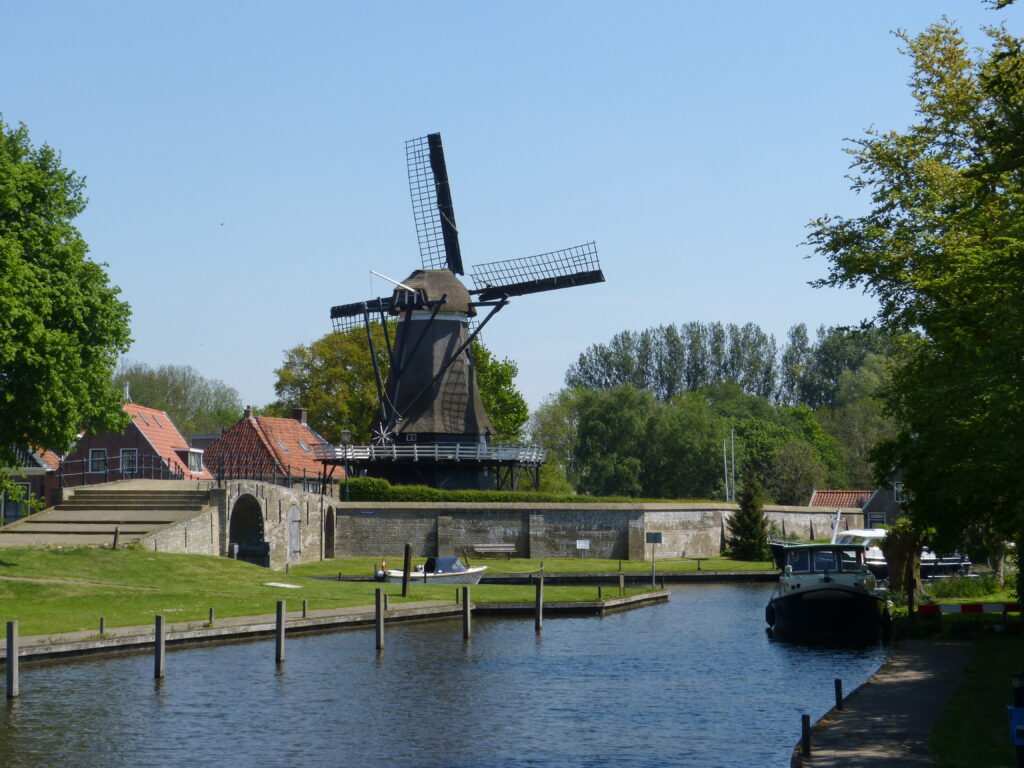
For such a tiny town, we were surprised to find a Tourist Information center with lots of information about the area in English.
Some of the signs around town even had English translations.
The sign for this cannonball says it was found in 1991 and is probably from the war of 1420.
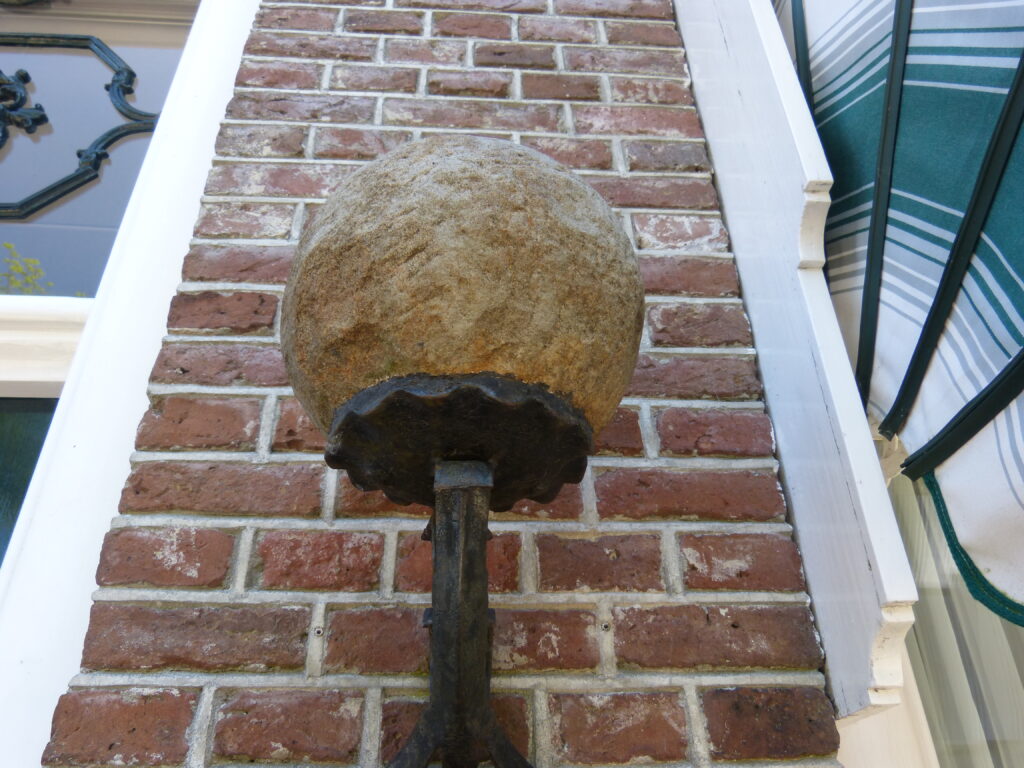
It’s referred to as a “bullet of stone”.
Love it.
After a leisurely exploration of the town, we sat outside at this place – the Restaurant Taveerne ‘T Bolwerk – for a drink.
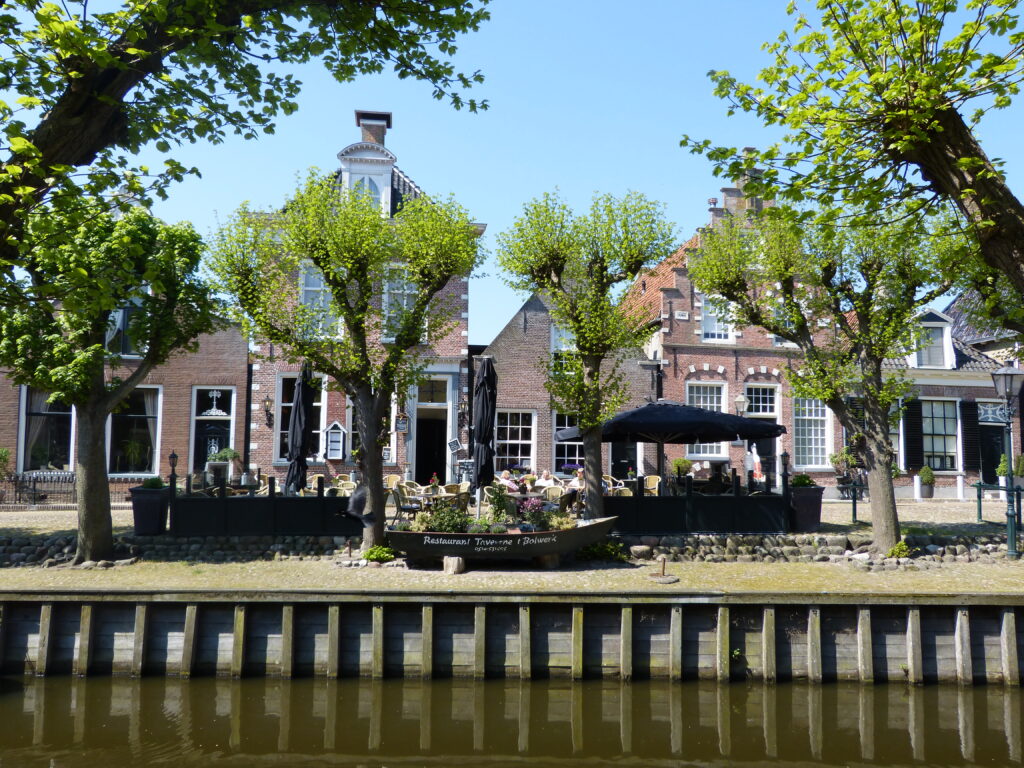
We made a couple of stops after leaving Sloten and eventually ended up at the next town along the route.
Stavoren
This one has the distinction of being the oldest city in Friesland, having been granted city rights in the 11th century.
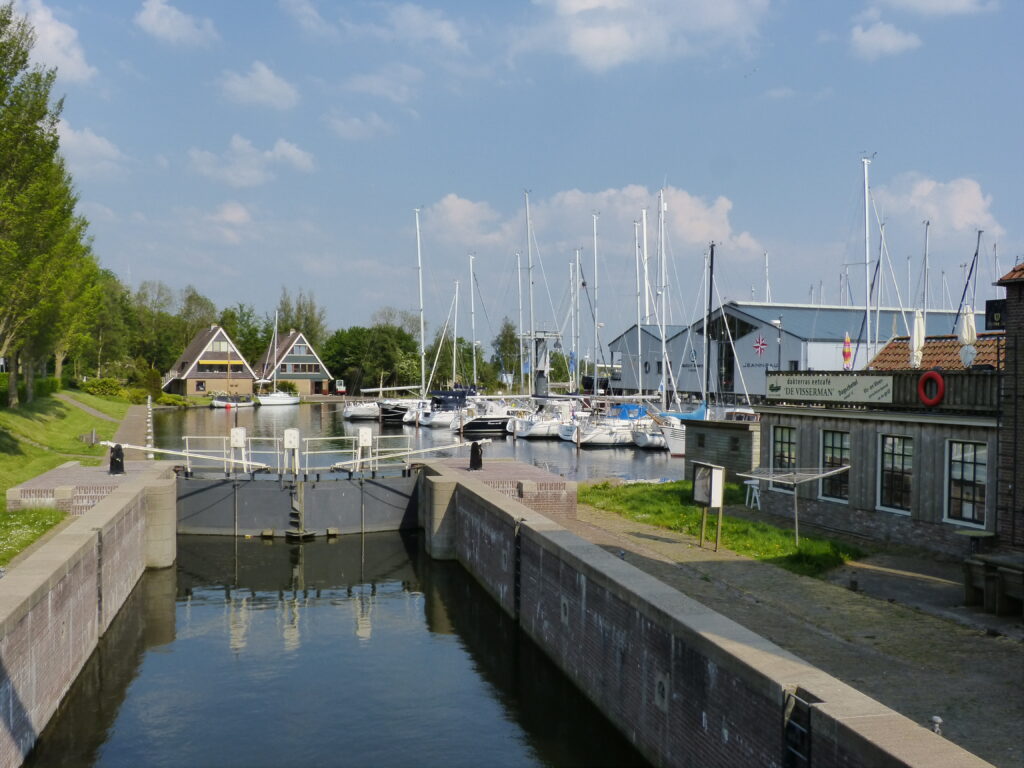
Once a very wealthy city, Stavoren declined after a sandbar formed that unfortunately blocked ships from entering its harbor.
There is a legend about this called The Lady of Stavoren.
The powerful lady in question sent a sea captain out to find and bring back to her the greatest treasure in the world.
When he returned with a shipload of wheat, the lady was furious and ordered that the bounty be thrown overboard into the harbor.
She was advised that her behavior was foolish and that she should have kept the wheat as her monetary riches might not last forever.
Scornfully she threw a ring into the water and declared that she had as much chance of losing her wealth as she had of that ring being returned to her.
At a banquet soon after that, she was eating fish and guess what she found inside of it?
Gasp! Yes, the very same ring she had thrown into the water.
Didn’t see that one coming, did you?
And what became of the wheat that was thrown overboard?
Well, it started growing on the sandbank that formed soon after that.
Because ships could no longer enter the harbor, the city went downhill and the lady became destitute and lived out her days in poverty.
This statue commemorates the legend.
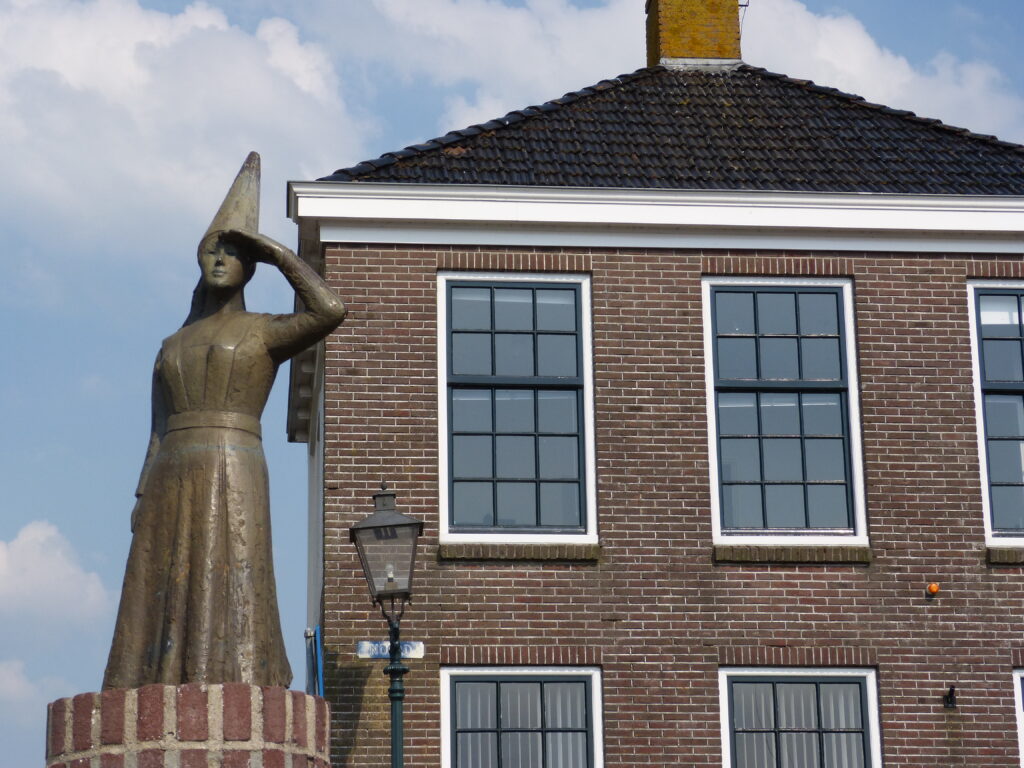
Hindeloopen
This is actually the first town we visited the day after arriving in Leeuwarden.
It is oh so cute.
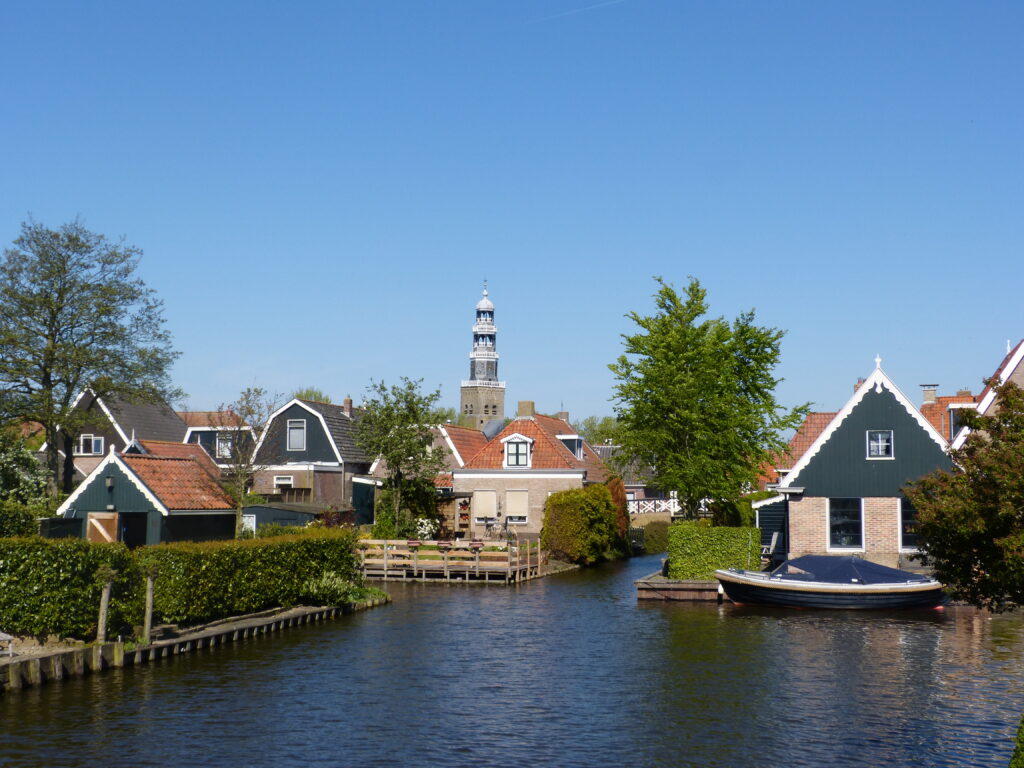
Like Sneek, Hindeloopen has a connection to World War II and we saw a couple of reference to that.
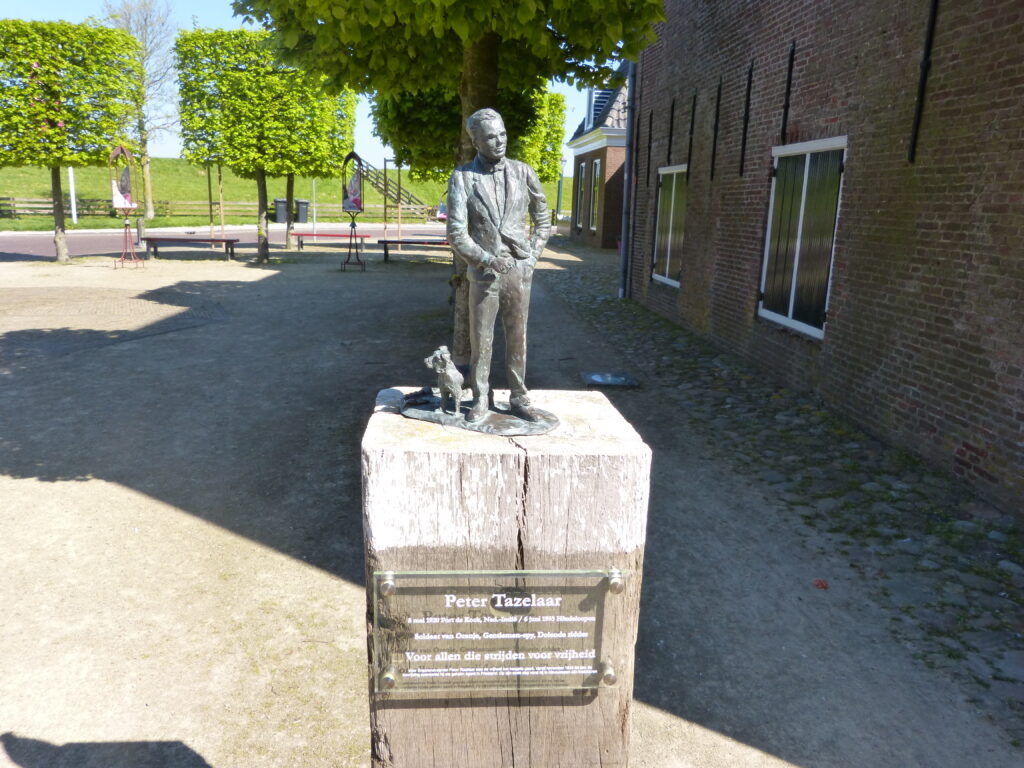
Peter Tazelaar, immortalized by this statue, was a member of the Dutch Resistance during the war.
In the 1950s, he worked for the United States as a CIA employee.
He died in Hindeloopen in 1993.
There is also a Commonwealth War Grave in the town.
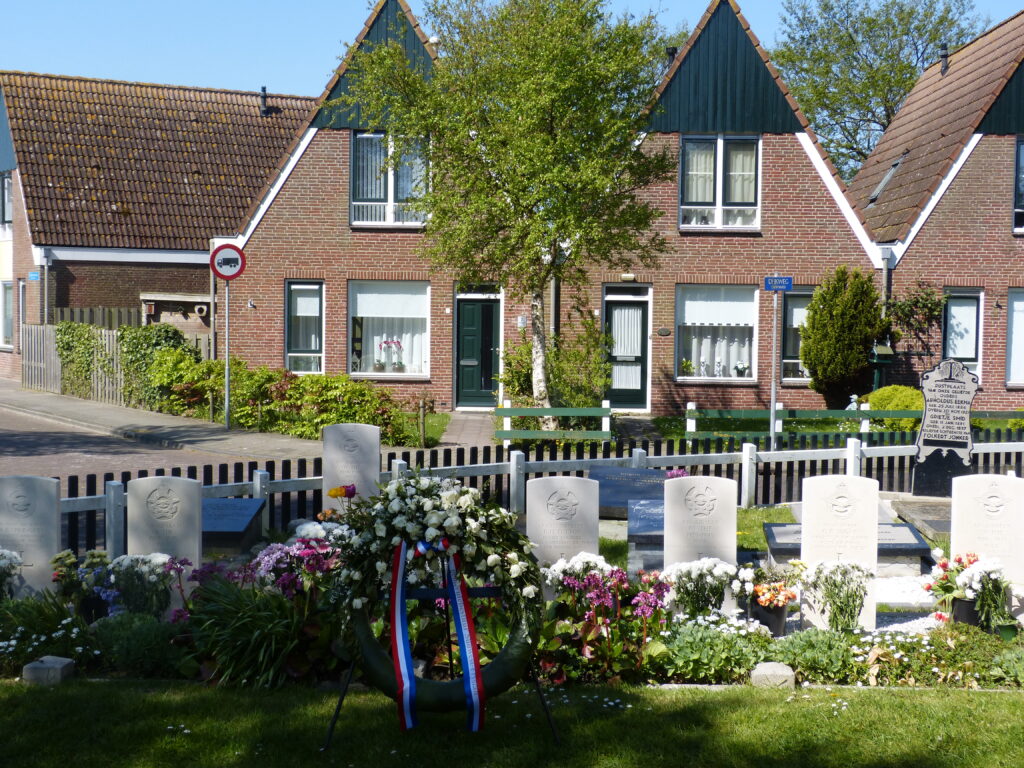
Eleven airmen from the United Kingdom, Australia and Canada are buried there.
Five of them are sadly unidentified.
In between seeing the sights and checking out some of the shops, we had a lovely lunch at a restaurant called de Hinde.
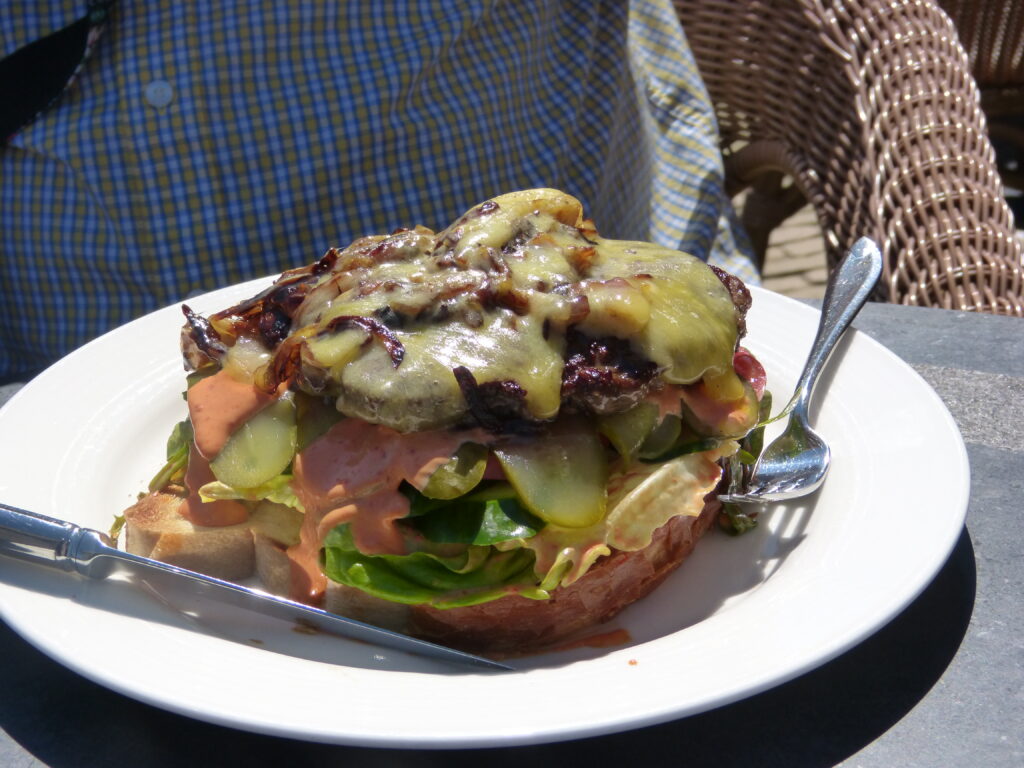
That was Sean’s burger. He said it wasn’t what he was expecting – open-faced, with a salad between the burger and bread smothered in French dressing – but he also said it was delicious.
Although we didn’t see it the day that we visited, apparently you can frequently see people strolling through town wearing traditional clothing.
We did see some wooden shoes, but not on anybody’s feet.
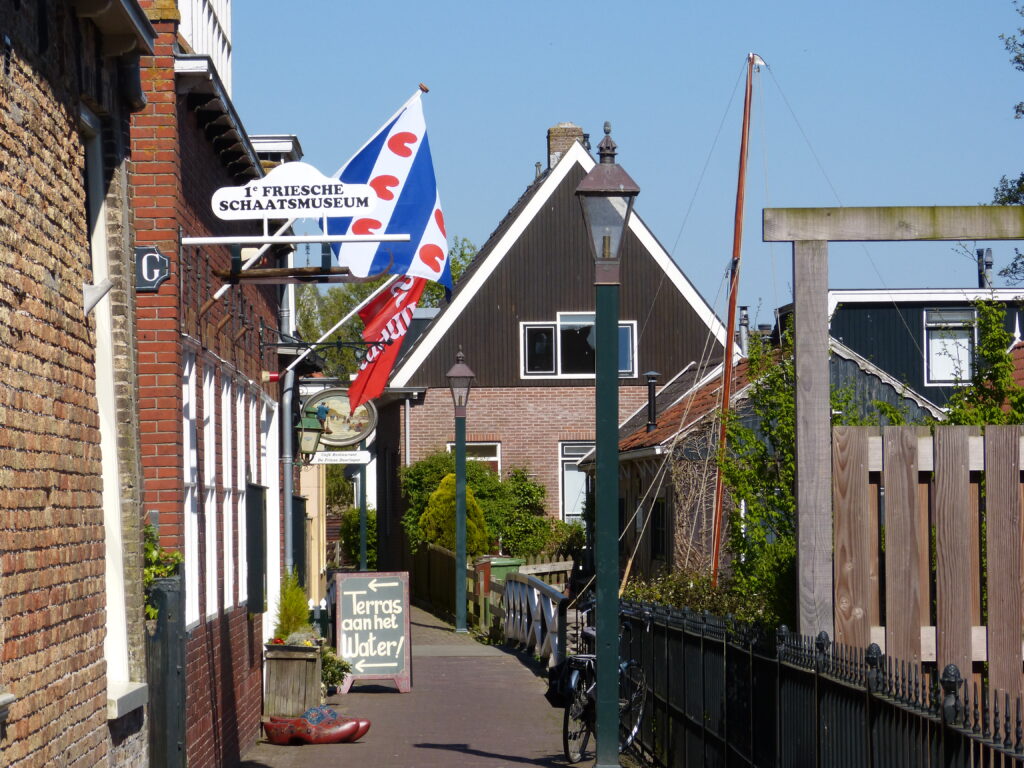
Workum
Workum is the next stop on the Eleven Cities Tour after Hindeloopen, and we made that our next stop as well.
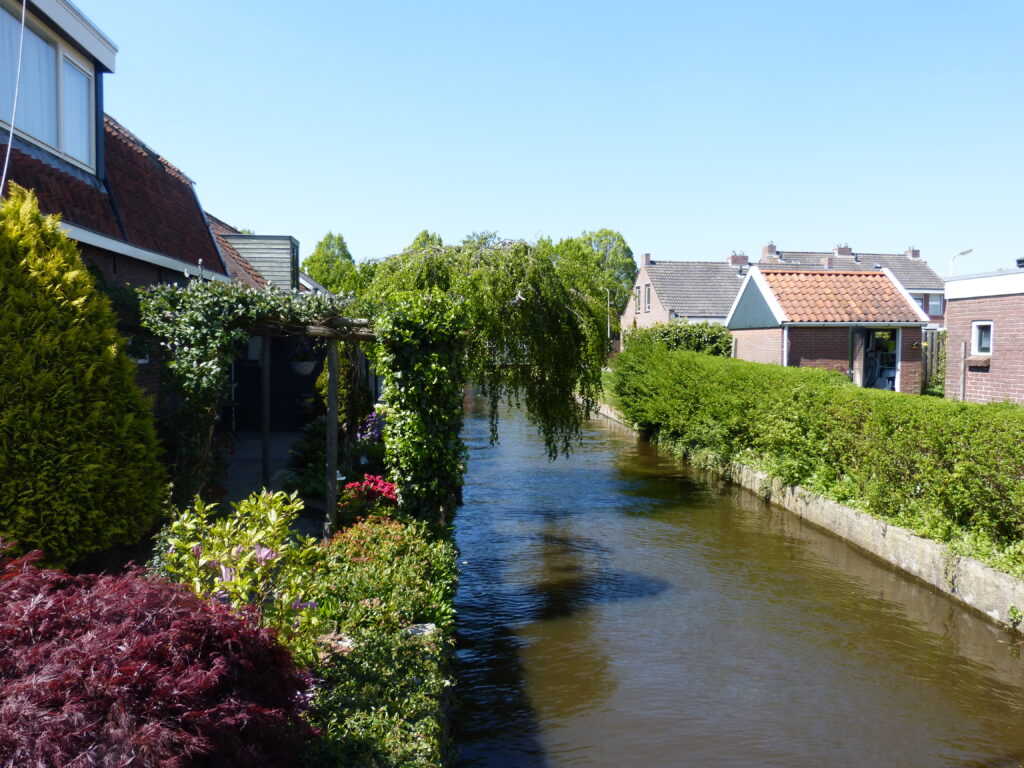
It’s the place where we had the most difficulty finding information in English.
We did find two churches that looked to be interesting, but unfortunately they were both closed.
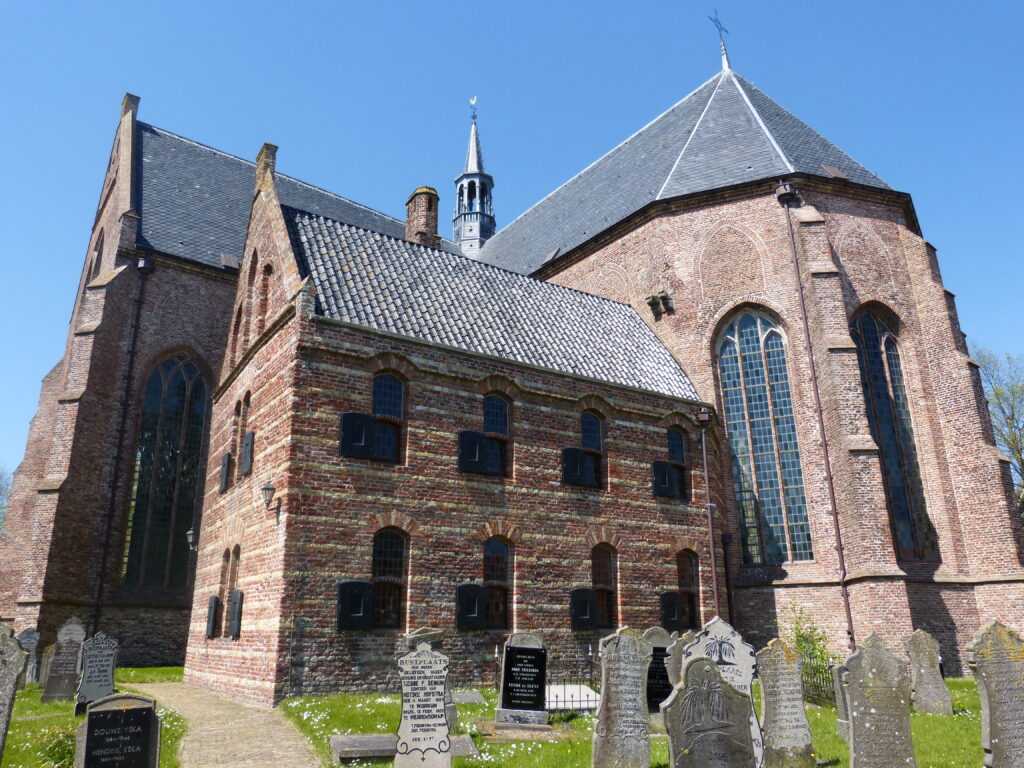
Workum does have an odd little connection with the United States.
It turns out the Hotze Koch was born there.
If you have paid attention to any American news at all in the last several years, you will have heard of the infamous Koch brothers.
Ol’ Hotze was their grandfather.
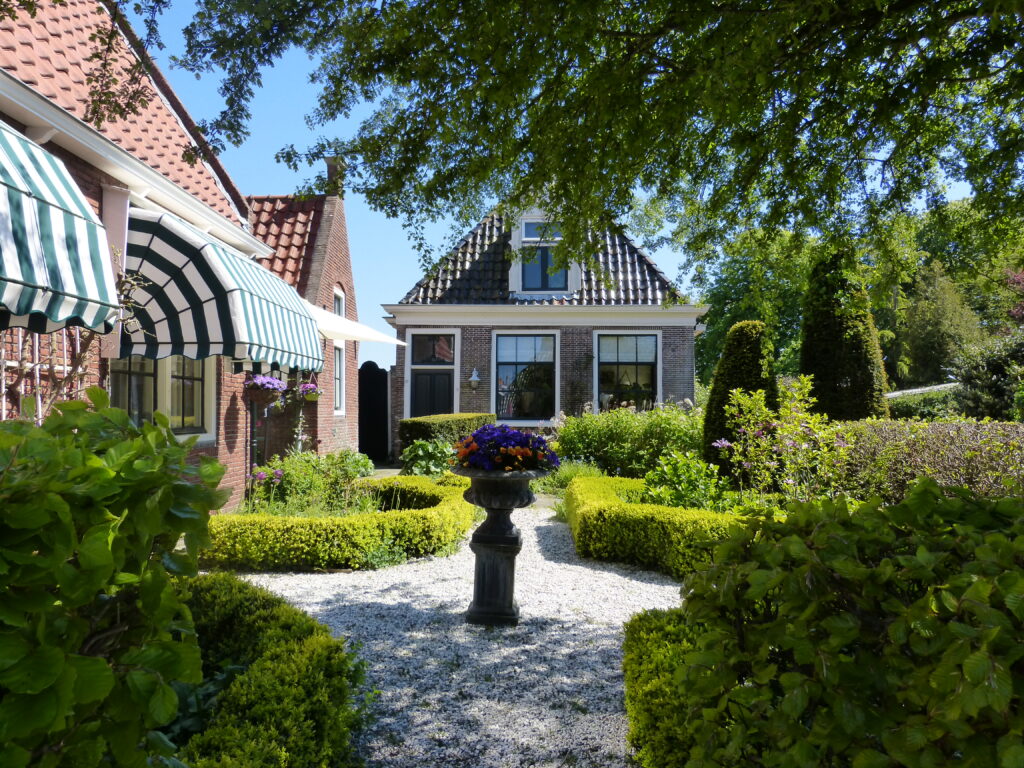
Workum also has a windmill just outside of the town.
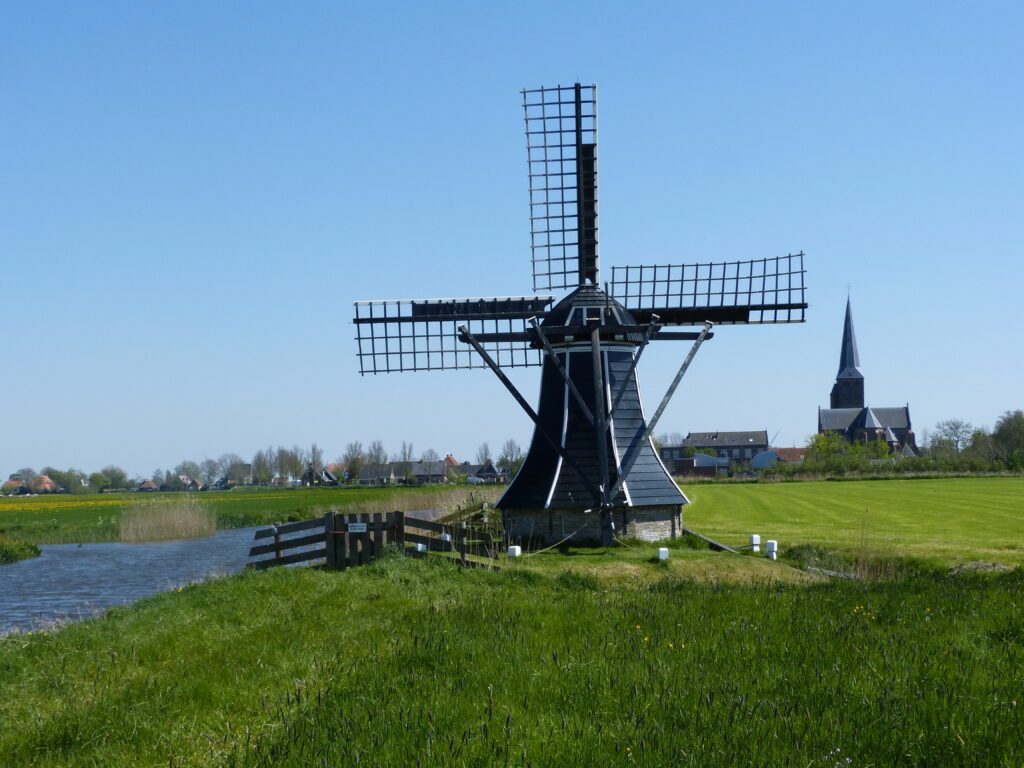
Built in 1899, it was fully restored to working order in 2006.
Bolsward
We happened to park in front of the Broerkerk (Brother’s Church) in Bolsward and it was a beautiful introduction to the town.
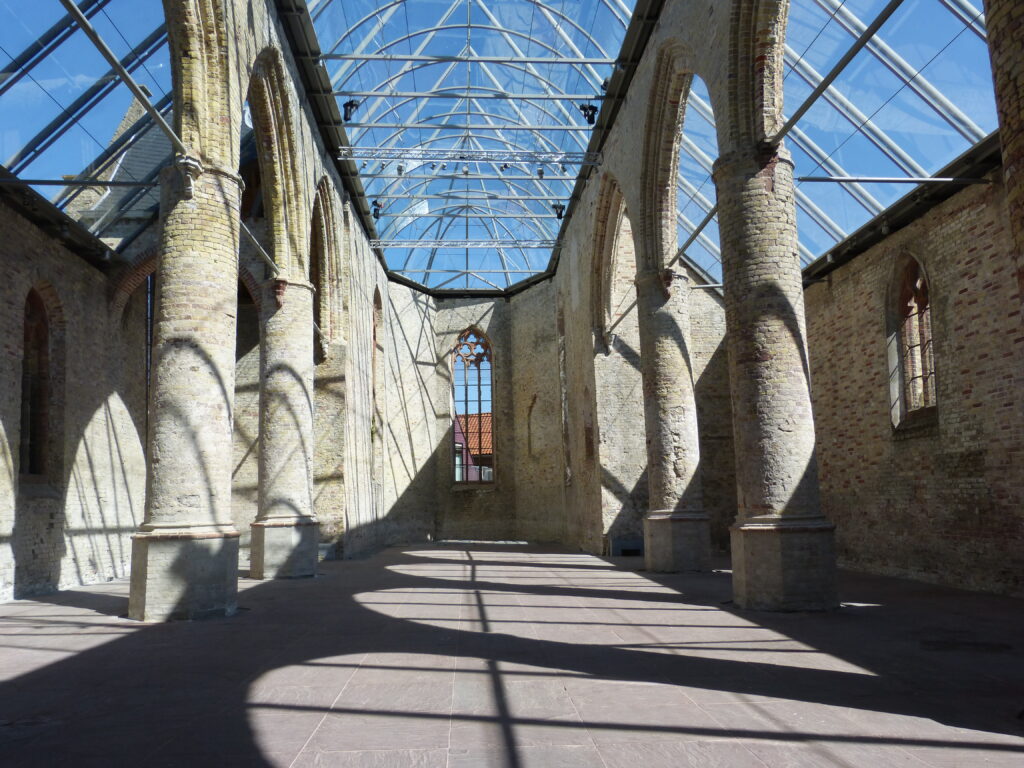
The church, which is the oldest building in town, was built in the 13th century as part of a monastery complex.
In 1980, a fire caused the roof of the church to collapse.
26 years later, the church got a glass roof and it is just splendid.
Like Workum, Bolsward also has a U.S. connection.
Frederick Philipse, who was born in Workum, emigrated to the U.S. in the mid 17th century.
He ended up being one of the wealthiest landowners in the “New Netherlands”, an area that took up a good chunk of what we normally think of as New England.
One of his descendants is John Jay, the first Chief Justice of the United States.
Dutch towns always have the most impressive town hall buildings and Bolsward is no exception.
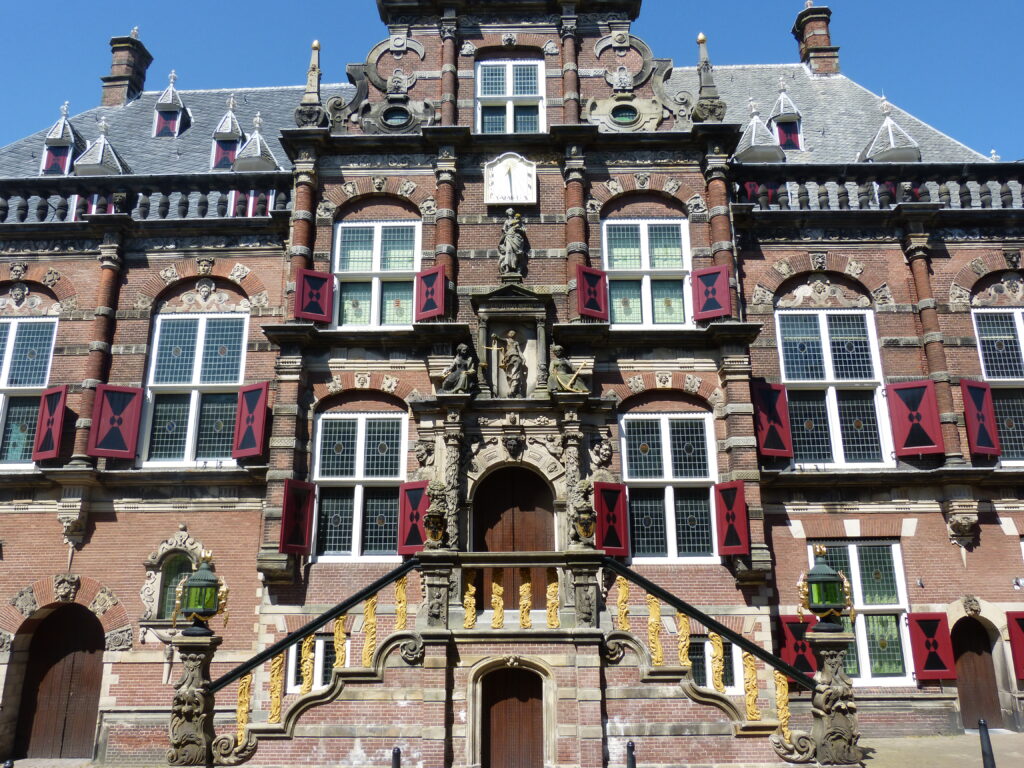
Harlingen
Does the name of this town sound familiar to you?
If so, it might be because you are familiar with Harlingen, TX.
The Texas town was settled by people from the Dutch town of the same name, and today the two towns are twinned.
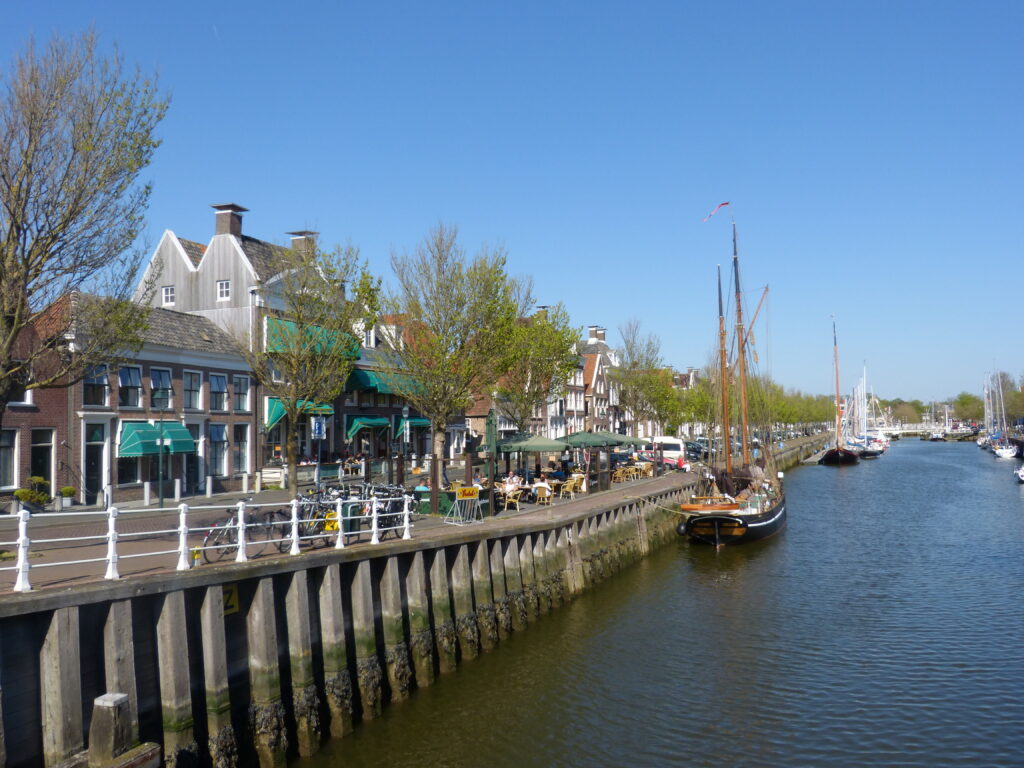
Walking around Harlingen, it is not difficult to imagine what it was like during their heyday in the fishing and shipping industries.
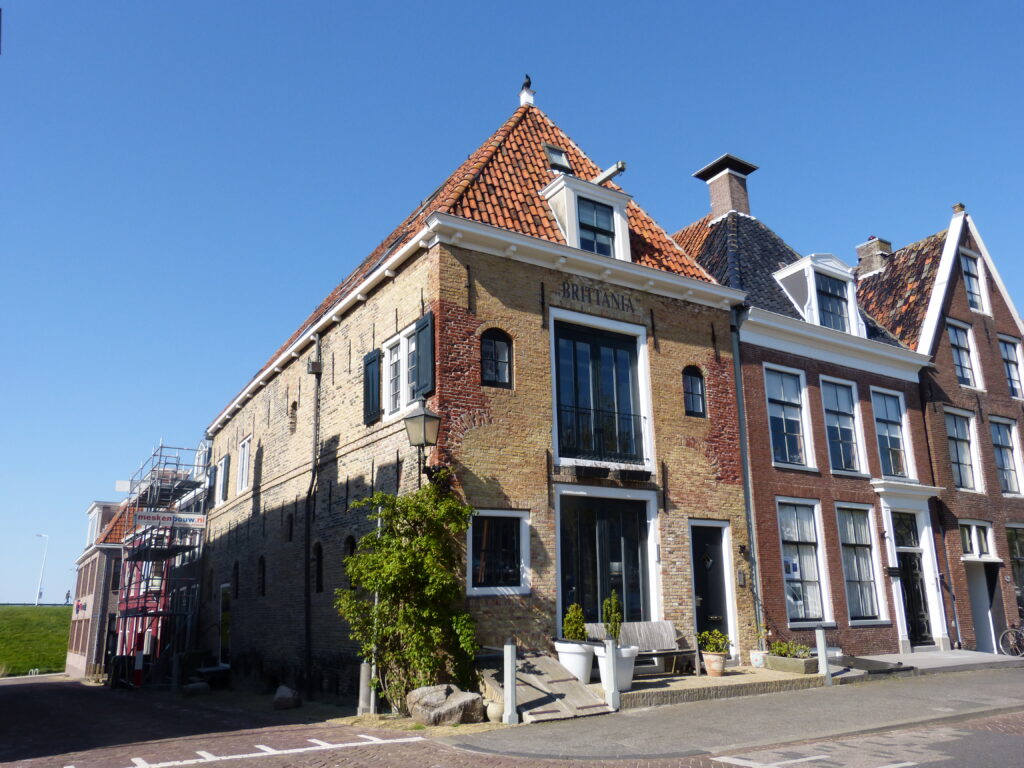
The Brittania building on the left was built as a warehouse in the 17th century.
This building, the Blauwe Hand (Blue Hand), was also built in the 17th century.
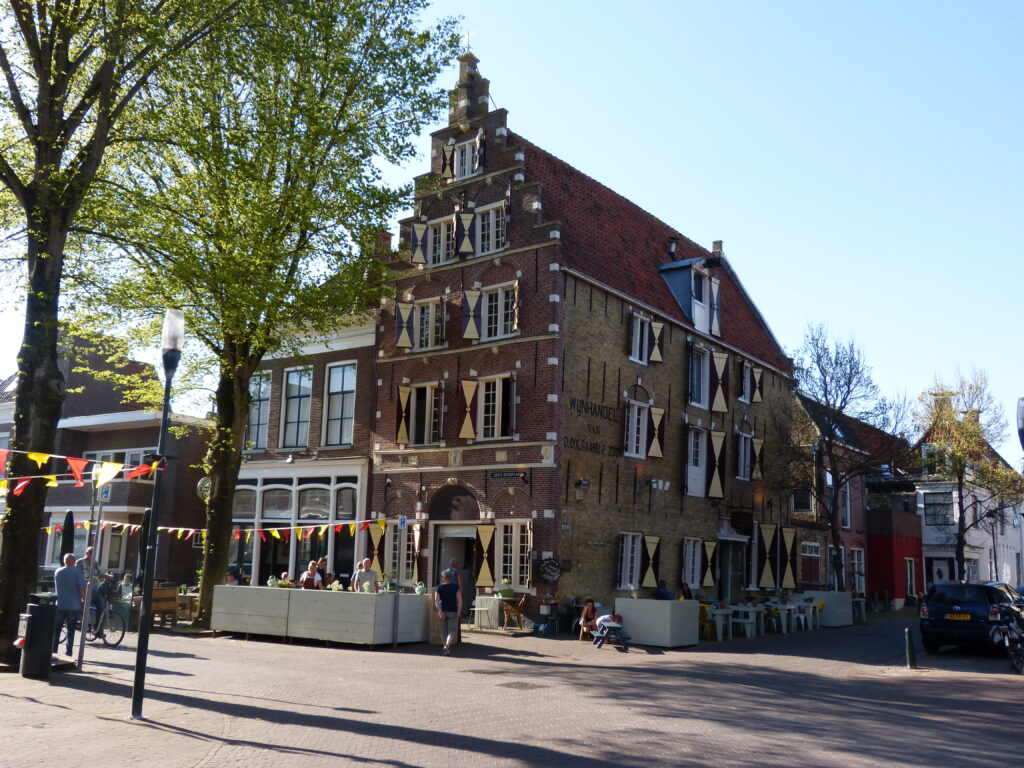
It once served as a wine warehouse and now houses a restaurant.
Franeker
We got to this town later in the day so I was disappointed that missed being able to visit their planetarium.
It seems that they have one of the oldest operating orreries in the world.
Oddly, right after returning from this trip, I watched the movie The Dark Crystal on television.
It’s one of my favorite movies and an orrery figures largelyin the film.
I actually couldn’t have told you what an orrery was before going to Franeker.
In case you’re wondering, it’s a mechanical model of the solar system.
We really just had time to sit on this square and had drinks at the De Doelen Grand Café.
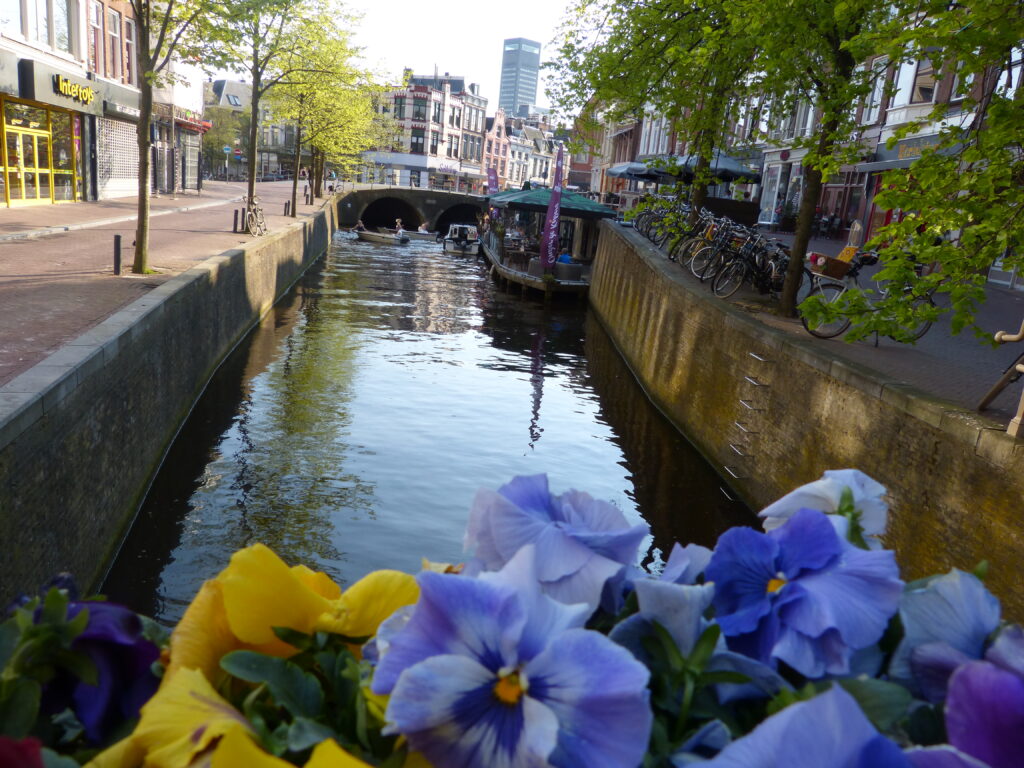
And the town had an odd little connection to a particular country.
If you guessed the United States as that country, nice try but it’s Mozambique.
Just kidding. It is, of course, the U.S.
A man by the name of Sixtus Petraeus was born in Franeker.
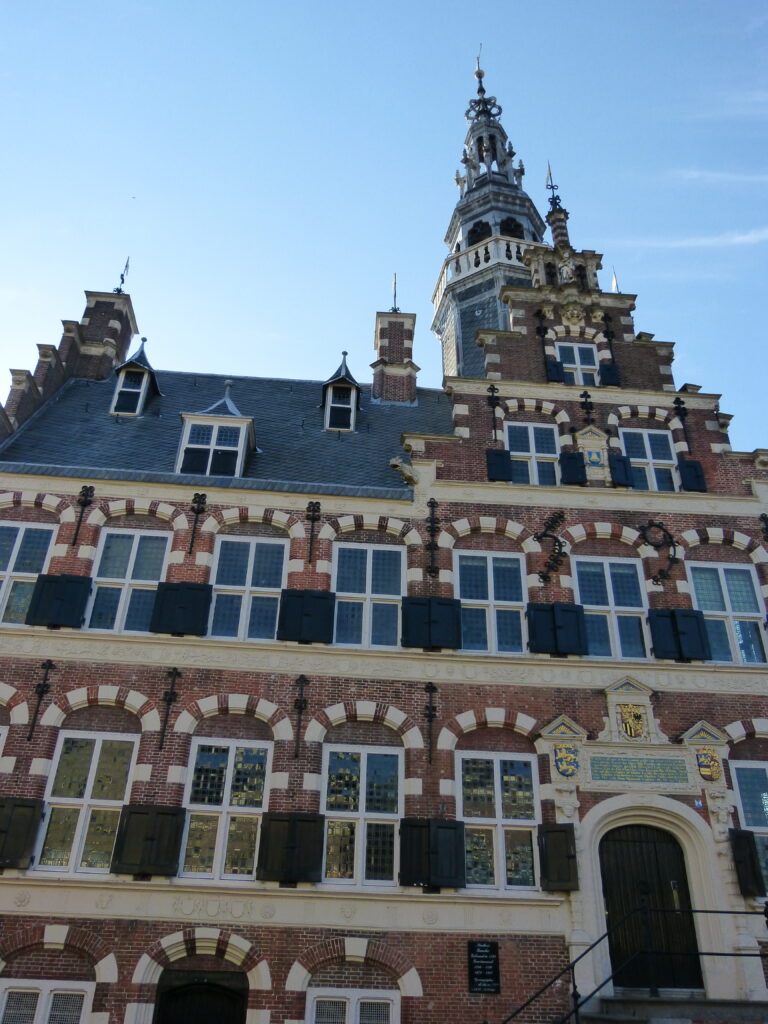
He became a sea captain and emigrated to the U.S. at the start of World War II.
His son David ended up becoming a well-known general in the United States Army after taking charge of coalition forces during the war in Iraq.
General Petraeus was also the director of the CIA for a short time before resigning due to a scandal about an extramarital affair.
Odd that there are two CIA connections to these little towns, isn’t it?
(I’ll wait while you scroll back up to remind yourself what the other one is.)
Dokkum
We visited this town mid-week, even though it is the last of the eleven towns on the route.
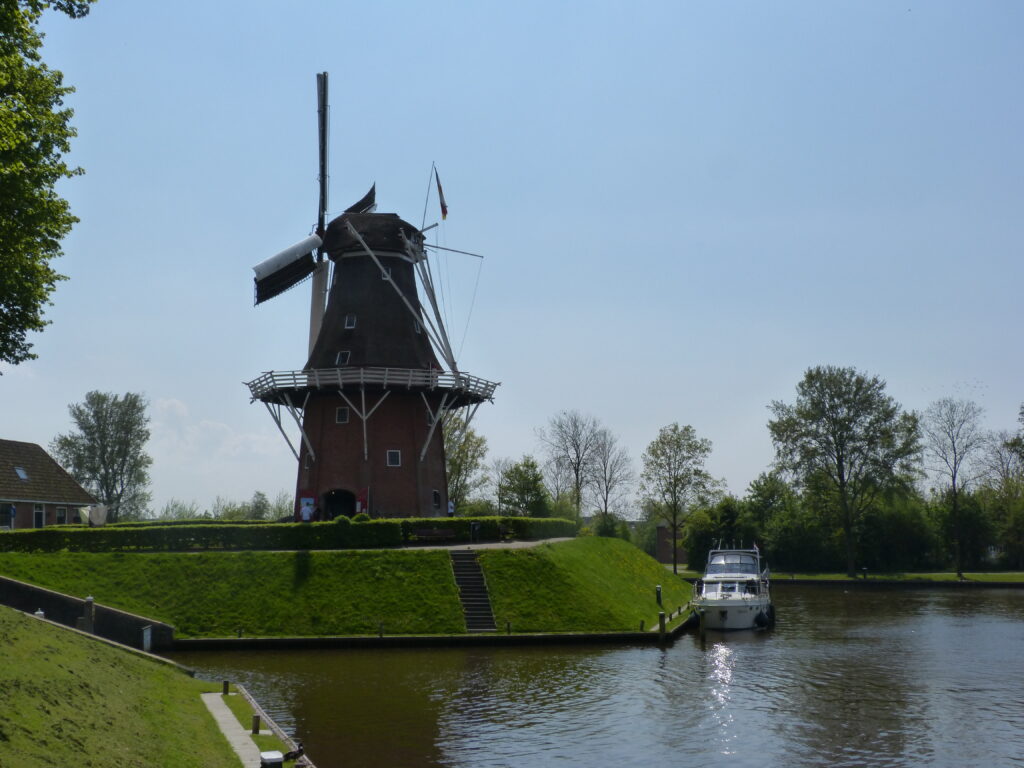
To be honest, we had not originally planned on visiting all eleven town and we certainly had not planned on visiting Dokkum.
As luck would have it, though, a police officer in Leeuwarden started talking with us our first night there and she recommended the town.
I’m so glad she did as it was one of the best.

Our first order of business in Dokkum was lunch, and we ended up eating at De Waegh Grand Café.
I had a sandwich on brown bread with goat cheese, walnuts, honey, tomatoes and greens.
It was unbelievably delicious. I keep thinking we (meaning Mr. Tipples) needs to try to recreate it at home.
Dokkum was originally a fortified town, meaning it had some type of defensive wall built around it for protection.
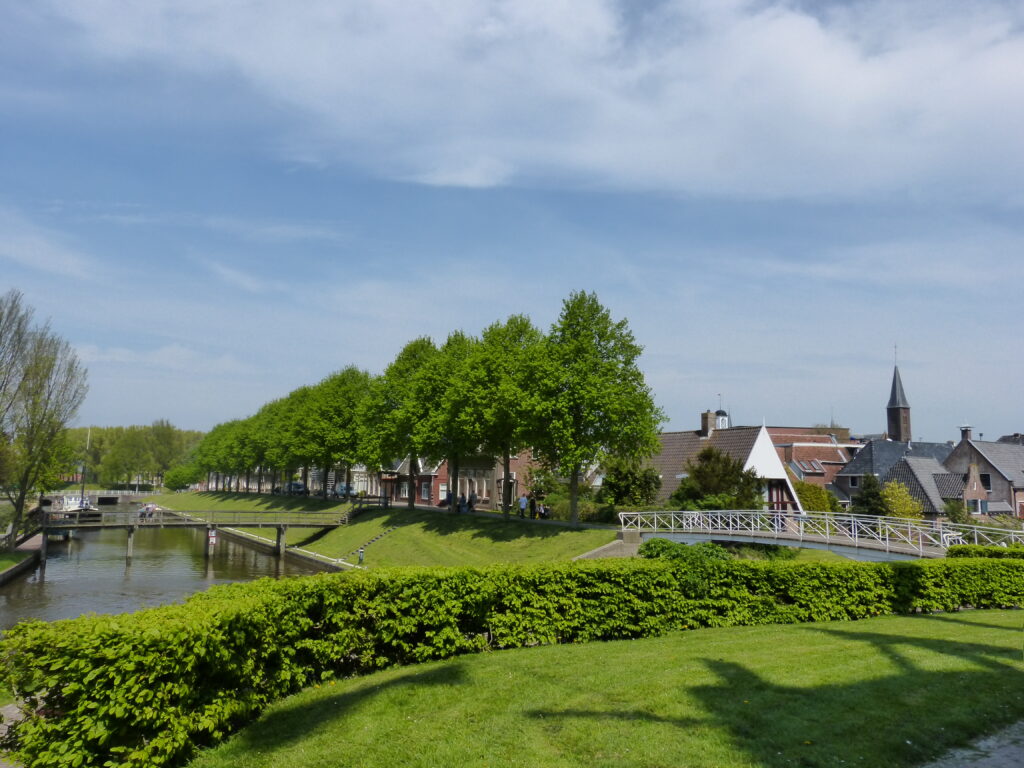
In this case, the “walls” were really sloped hills called bulwarks, which you can see in that photo.
As pretty as Dokkum is, it has a dark spot in its history.
In the year 754, a man named Boniface make a missionary trip there hoping to convert some of the residents to Christianity.
Instead, he was murdered by a group thinking that his possessions contained things worth money.
They found manuscripts instead of silver and gold.
Boniface’s body was carried to Mainz, Germany and then later to Fulda, Germany where it remains buried to this day in the cathedral there.
Boniface was later granted sainthood and some sources credit him with the invention of the Christmas tree.
There is a trail called the Boniface Route that traces the path where his body was carried from Mainz to Fulda.
The route actually passes through my town, just a few blocks from where we live.
And speaking of sad events – ohmigosh, I just wanted to give this little boy a hug.
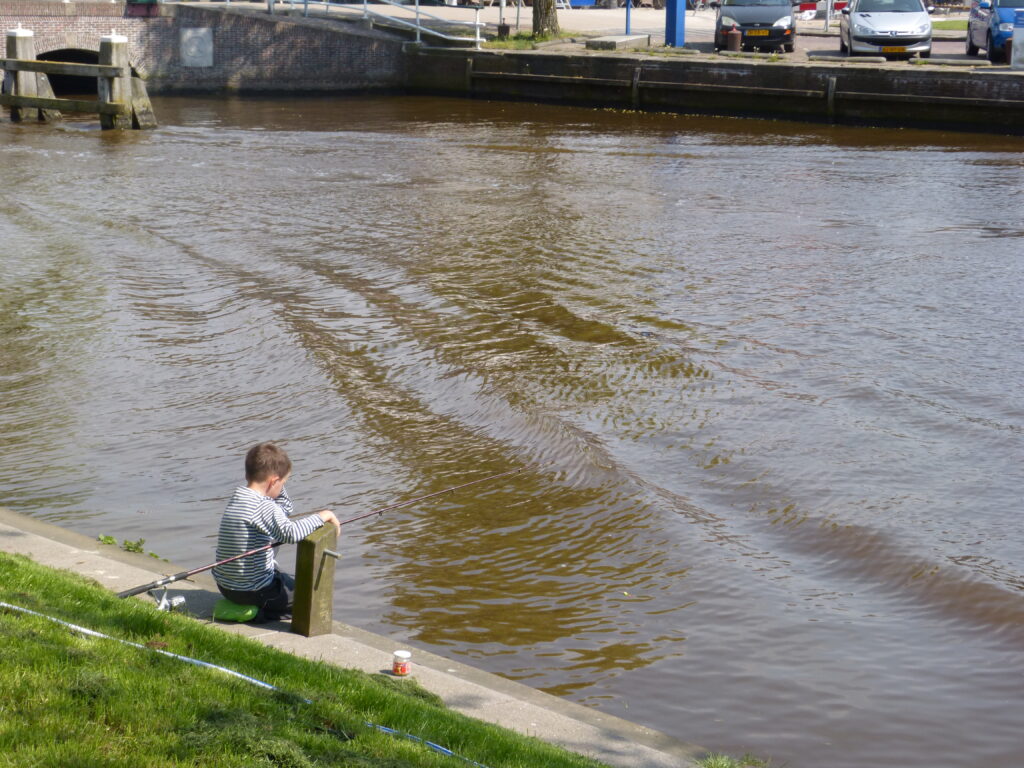
I’m guessing he had not yet caught any fish and he looked so dejected it was just pitiful! (Yet adorable.)
On a brighter note, Dokkum was really one of the cutest towns we saw during our week in the area.
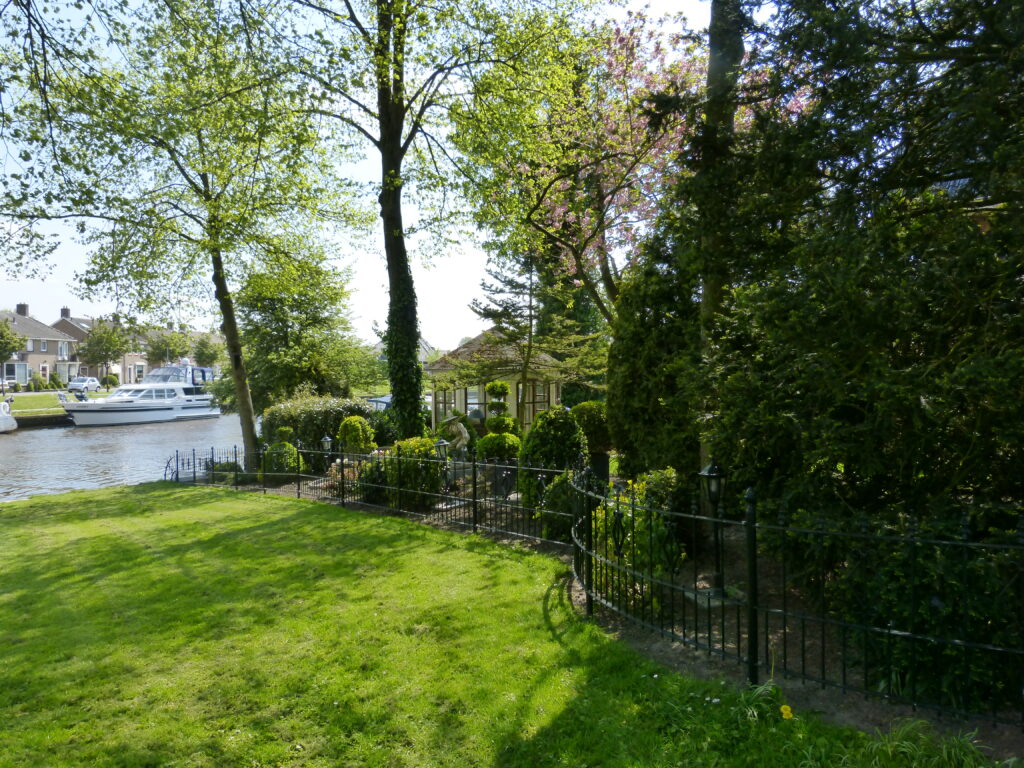
Although we didn’t see it, it apparently has the smallest hospital in the Netherlands.
If you’re worrying about the tipples part of the trip never fear, there were plenty.
I just forgot to take photos of them.
Naturally there was lots of Heineken consumed.
As I’ve said many time before, the Netherlands is the only place I’ll buy it.
We also discovered a new tipple that Mr. Tipples liked but I didn’t.
It’s a type of Dutch gin called Beerenburg.
The bartender at the hotel gave some samples to Sean (aka Mr. Tipples) and recommended that we check out the Weduwe Joustra manufacturer in Sneek, where we happened to be going the following day.
The owner was so thrilled that the bartender had made that recommendation and she couldn’t have been sweeter.
You can taste whatever you want at their store, and Sean took advantage of that.
He ended up choosing a lemony-flavored variety of Beerenburg to take home with us.
If you’re interested in visiting all the towns on the Elfstedentocht, you can hope for the next big freeze and try to skate between them all.
That is, as long as you have a permit and belong to the Association of the Eleven Frisian Cities.
In the meantime, you can also do a bicycle tour that starts and ends in Bolsward.
Or you can do what we did and drive between towns.
Of course you can try public transportation as well, although it could be inconvenient in some places and seeing things like the windmill outside of Workum would be somewhat difficult.
Regardless of what you choose you are sure to enjoy good food, great drinks, friendly people, fabulous architecture, magnificent churches and amazing canalside scenery.

